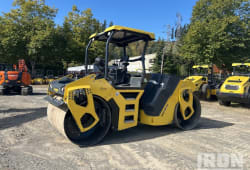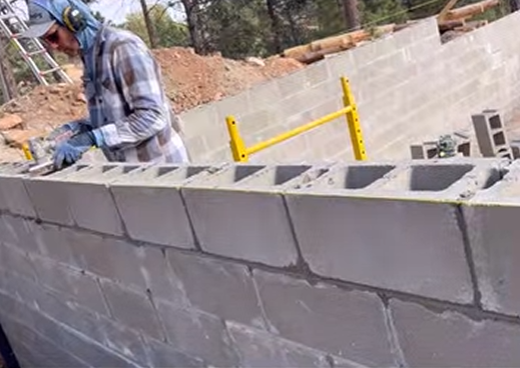Job Hazard Analysis (JHA): Identifying & Mitigating Safety Risks
14 Min read
)
August 11, 2023
Job Hazard Analysis (JHA) is an essential process that helps ensure the safety and well-being of employees in the workplace. By identifying potential hazards and taking necessary preventive measures, organizations can create a safer working environment and reduce the risk of accidents and injuries.
Understanding Job Hazard Analysis (JHA)
Job Hazard Analysis, also known as Job Safety Analysis (JSA), is a systematic process that involves breaking down job tasks into specific steps, identifying potential hazards at each step, and determining preventive measures to mitigate those hazards. By analyzing jobs and tasks in this way, employers can proactively address safety risks and prevent accidents from occurring.
Definition of Job Hazard Analysis
Job Hazard Analysis is a process of identifying potential hazards associated with specific job tasks and developing strategies to eliminate or control those hazards. It involves systematically evaluating each step of a job for potential risks and implementing appropriate safety measures.
Importance of JHA in the Workplace
Job Hazard Analysis plays a crucial role in maintaining workplace safety. By identifying and mitigating safety risks, employers can ensure the well-being of their employees, prevent accidents and injuries, minimize costly downtime, and comply with occupational health and safety regulations.
Implementing a comprehensive JHA program requires a deep understanding of the job tasks and potential hazards associated with them. It involves collaboration between management, supervisors, and employees to gather accurate information about the tasks performed, the equipment used, and the surrounding work environment.
During the JHA process, each step of a job is carefully examined to identify hazards that may arise. These hazards can include physical hazards such as slips, trips, and falls, as well as chemical hazards, ergonomic hazards, and biological hazards. By identifying these hazards, employers can take appropriate measures to eliminate or control them, ensuring the safety of their employees.
Once the hazards have been identified, preventive measures are determined and implemented. These measures can include engineering controls, such as installing safety guards or implementing ventilation systems, administrative controls, such as implementing work procedures and training programs, and personal protective equipment (PPE), such as safety goggles or gloves.
Regular review and update of the JHA program is essential to ensure its effectiveness. As job tasks change or new hazards are identified, the JHA must be adjusted accordingly. It is also important to involve employees in the review process, as they are the ones performing the tasks and can provide valuable insights and suggestions for improvement.
By implementing a comprehensive JHA program, employers demonstrate their commitment to workplace safety and the well-being of their employees. It not only helps prevent accidents and injuries but also creates a culture of safety where employees feel valued and protected. This, in turn, leads to increased productivity, reduced absenteeism, and improved overall organizational performance.
Steps in Conducting a Job Hazard Analysis
:format(webp))
To conduct an effective Job Hazard Analysis, organizations can follow a systematic approach that involves several key steps:
Identifying the Job or Task
The first step in Job Hazard Analysis is to identify the job or task that needs to be analyzed. This can be a specific job within an organization or even a single task associated with a larger job.
For example, in a manufacturing facility, one job that may require analysis is the operation of heavy machinery used for lifting and moving materials. This task involves operating a forklift to transport pallets from one location to another within the facility.
Identifying the specific job or task is crucial as it sets the foundation for the analysis process and ensures that all potential hazards are thoroughly examined.
Breaking Down the Job into Sequential Steps
Once the job or task has been identified, it is important to break it down into a series of sequential steps. This helps in the analysis process by making it easier to identify potential hazards associated with each step.
Continuing with the example of operating a forklift, the task can be broken down into steps such as inspecting the forklift before use, entering the forklift cabin, starting the engine, operating the controls to lift and move the pallets, and finally, parking the forklift and shutting down the engine.
Breaking down the job into sequential steps allows for a comprehensive analysis of each step, ensuring that no potential hazards are overlooked.
Identifying Potential Hazards in Each Step
After breaking down the job into sequential steps, the next step is to identify potential hazards associated with each step. This can include physical hazards, such as machinery or equipment, as well as environmental hazards, such as exposure to toxic substances or extreme temperatures.
For instance, in the step of inspecting the forklift before use, potential hazards may include faulty brakes, worn-out tires, or leaks in the hydraulic system. In the step of operating the controls to lift and move the pallets, hazards may include collisions with other objects or individuals, instability of the load, or inadequate visibility.
Identifying potential hazards in each step is essential for developing effective preventive measures to mitigate the risks and ensure a safe working environment.
Determining Preventive Measures for Each Hazard
Once potential hazards have been identified, the next step is to determine appropriate preventive measures for each hazard. This can include implementing engineering controls, such as machine guards or ventilation systems, as well as administrative controls, such as training programs or safety protocols.
For example, to address the hazard of collisions with other objects or individuals during the operation of the forklift, preventive measures may include installing proximity sensors on the forklift, implementing traffic control measures in the facility, and providing training to forklift operators on safe maneuvering techniques.
By determining preventive measures for each hazard, organizations can effectively minimize the risks associated with the job or task, ensuring the safety and well-being of their employees.
Role of Employees in Job Hazard Analysis
Employee participation is crucial in the Job Hazard Analysis process. By involving employees in the analysis and decision-making process, organizations can benefit from their firsthand knowledge and experience, leading to more effective hazard identification and control strategies.
Employee Participation in JHA
Employees should be actively involved in the Job Hazard Analysis process. They can provide valuable insight into the tasks they perform daily and help identify potential hazards that may have been overlooked. By encouraging employee participation, organizations can create a culture of safety and empower their workforce to take ownership of their safety.
When employees actively participate in the Job Hazard Analysis process, they bring a unique perspective to the table. Their firsthand experience and knowledge of the tasks they perform daily allow them to identify potential hazards that may not be obvious to others. By involving employees in hazard identification, organizations can tap into their expertise and improve the accuracy and effectiveness of the analysis.
In addition to identifying hazards, employee participation in the Job Hazard Analysis process also helps in developing control strategies. Employees can provide valuable input on the feasibility and practicality of various control measures. Their input can help organizations select control strategies that are not only effective but also feasible to implement within the work environment.
Benefits of Employee Involvement in JHA
When employees are actively involved in the Job Hazard Analysis process, they gain a better understanding of the potential hazards associated with their work. This increased awareness leads to a safer working environment, reduced risk of accidents and injuries, improved morale, and increased productivity.
By actively participating in the Job Hazard Analysis process, employees become more aware of the risks and hazards they face daily. This heightened awareness helps them make better decisions and take necessary precautions to avoid accidents and injuries. It also encourages them to be more vigilant and proactive in identifying and reporting potential hazards to their supervisors or safety personnel.
Furthermore, involving employees in the Job Hazard Analysis process promotes a culture of safety within the organization. When employees see that their input is valued and taken into consideration, they feel empowered and motivated to prioritize safety in their work. This, in turn, creates a positive work environment where everyone is committed to maintaining a safe and healthy workplace.
The benefits of employee involvement in the Job Hazard Analysis process extend beyond safety. When employees actively participate in analyzing and mitigating hazards, they develop a sense of ownership and responsibility for their safety and the safety of their colleagues. This sense of ownership translates into increased morale and job satisfaction, leading to higher productivity and overall organizational success.
In conclusion, employee participation is essential in the Job Hazard Analysis process. By involving employees in hazard identification and control strategies, organizations can harness their knowledge and experience to create a safer work environment, improve morale, and enhance productivity. Organizations that prioritize employee involvement in JHA demonstrate their commitment to safety and empower their workforce to actively contribute to the overall success of the organization.
Implementing Safety Measures from JHA
Once the hazards have been identified and preventive measures have been determined, the next step is to implement those safety measures effectively.
Implementing safety measures is a critical aspect of maintaining a safe and healthy work environment. By taking action to address identified hazards, organizations can significantly reduce the risk of accidents and injuries.
Creating a Safety Action Plan
A safety action plan is a crucial tool in implementing safety measures identified during the Job Hazard Analysis (JHA). This plan outlines the specific steps and strategies that need to be taken to address the identified hazards effectively.
When creating a safety action plan, it is essential to involve key stakeholders, such as supervisors, safety officers, and employees. By including multiple perspectives, organizations can ensure that all potential risks are considered and appropriate measures are implemented.
The safety action plan should clearly define responsibilities for each task, establish realistic timelines for implementation, and provide clear communication channels to ensure that everyone is aware of the changes being made.
Training Employees on Safety Measures
Proper training is a vital component of implementing safety measures identified during the JHA. It is essential to ensure that employees understand the hazards associated with their work tasks and are equipped with the knowledge and skills necessary to work safely.
Training programs should be comprehensive and tailored to the specific needs of each job role. This may include classroom training, hands-on demonstrations, and practical exercises to reinforce learning.
By investing in employee training, organizations can empower their workforce to identify potential hazards, take appropriate preventive measures, and respond effectively in case of an emergency.
Regular Review and Update of JHA
Job Hazard Analysis is not a one-time process but rather an ongoing effort. To ensure the continued effectiveness of safety measures, it is essential to regularly review and update the JHA.
Regular reviews allow organizations to identify any new hazards that may have emerged due to changes in job tasks, equipment, or workplace conditions. By staying proactive and responsive, organizations can continuously improve their safety practices and protect their employees.
During the review process, it is crucial to involve employees who perform the job tasks being analyzed. Their input and observations can provide valuable insights into potential hazards and help refine the preventive measures being implemented.
Updating the JHA should involve revisiting the hazard identification process, reassessing the effectiveness of existing preventive measures, and making any necessary adjustments. This ensures that the JHA remains a living document that accurately reflects the current state of the workplace.
By regularly reviewing and updating the JHA, organizations demonstrate their commitment to maintaining a safe and healthy work environment and continuously improving their safety practices.
Case Studies of Effective Job Hazard Analysis
Job Hazard Analysis has proven to be effective in various industries. Let's explore two case studies that highlight its importance:
JHA in the Construction Industry
In the construction industry, Job Hazard Analysis is crucial for identifying potential hazards at construction sites. By analyzing tasks such as working at heights, operating heavy machinery, or working with hazardous materials, construction companies can implement targeted safety measures to protect workers and prevent accidents.
For example, let's consider the case of a construction company that was tasked with building a high-rise building in a busy urban area. Before starting the project, the company conducted a comprehensive Job Hazard Analysis to identify potential hazards associated with the construction activities.
During the analysis, they identified several high-risk tasks, such as working at extreme heights, operating cranes, and handling heavy construction materials. To mitigate these hazards, the company implemented strict safety protocols, including the use of fall protection equipment, regular equipment inspections, and training programs for workers to ensure they were aware of the potential risks and how to mitigate them.
By conducting a thorough Job Hazard Analysis, the construction company was able to create a safe working environment for its employees. This not only prevented accidents and injuries but also improved productivity and overall project efficiency.
JHA in the Manufacturing Industry
The manufacturing industry often involves complex machinery and processes, making it essential to perform thorough Job Hazard Analysis. By identifying potential hazards associated with tasks such as machine operation, material handling, or exposure to harmful substances, manufacturers can implement appropriate safety controls, such as machine guards, personal protective equipment, or ventilation systems.
Let's consider a case study of a manufacturing company that specializes in producing chemical products. To ensure the safety of their workers and prevent accidents, the company conducted a detailed Job Hazard Analysis of their manufacturing processes.
During the analysis, they identified several potential hazards, including exposure to toxic chemicals, the risk of fire or explosion, and ergonomic issues related to repetitive tasks. Based on these findings, the company implemented various safety measures, such as providing workers with proper personal protective equipment, implementing strict protocols for handling hazardous materials, and installing ventilation systems to control chemical fumes.
Additionally, the company introduced regular training programs to educate employees about the potential hazards and how to mitigate them. This proactive approach to safety not only protected workers from harm but also ensured compliance with regulatory requirements and enhanced the company's reputation for prioritizing employee well-being.
By conducting a comprehensive Job Hazard Analysis, the manufacturing company was able to identify and address potential hazards, creating a safer work environment for their employees and minimizing the risk of accidents or occupational illnesses.
Challenges in Conducting Job Hazard Analysis
While Job Hazard Analysis is highly beneficial, several challenges can hinder its effective implementation.
Common Pitfalls in Identifying Hazards
Identifying all potential hazards can be challenging, especially in complex work environments. Lack of knowledge, insufficient training, or complacency can lead to hazards being overlooked. It is crucial to ensure that those conducting the analysis have the necessary expertise and are vigilant in their hazard identification efforts.
Overcoming Resistance to Safety Measures
Resistance to safety measures can pose another challenge in Job Hazard Analysis. Employees may resist changes that they perceive as inconvenient or time-consuming. Effective communication, training, and management support are key to overcoming this resistance and fostering a culture of safety.
The Future of Job Hazard Analysis
As technology continues to advance, so does the way organizations conduct Job Hazard Analysis.
Technological Advances in JHA
New technologies, such as virtual reality and augmented reality, provide exciting opportunities for immersive and interactive Job Hazard Analysis. These technologies allow employees to experience potential hazards in a safe and controlled environment, increasing their understanding and awareness of safety risks.
The Role of AI and Machine Learning in JHA
Artificial Intelligence (AI) and Machine Learning are increasingly being utilized in Job Hazard Analysis. These technologies can analyze vast amounts of data to identify patterns, predict potential hazards, and recommend optimal control measures. This can significantly enhance the efficiency and accuracy of Job Hazard Analysis processes.
In conclusion, Job Hazard Analysis is a vital tool for identifying and mitigating safety risks in the workplace. Through a systematic process of hazard identification and control, organizations can create a safer working environment, prevent accidents and injuries, and ensure the well-being of their employees. By involving employees, implementing safety measures, and embracing technological advancements, organizations can stay proactive in their efforts to prioritize workplace safety.

Post acquisition of Boom & Bucket, the company he founded, Adam now leads Marketplace Growth for Ritchie Bros.














